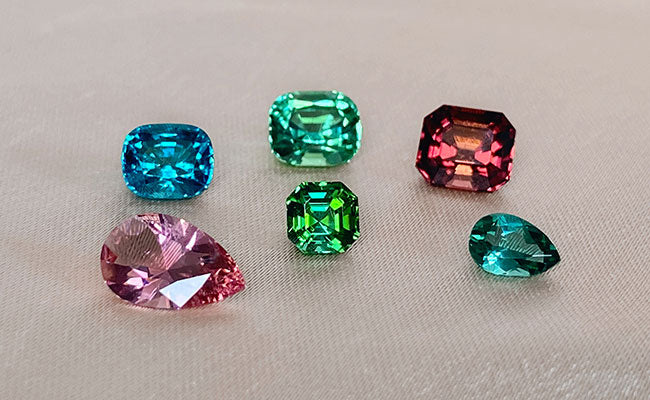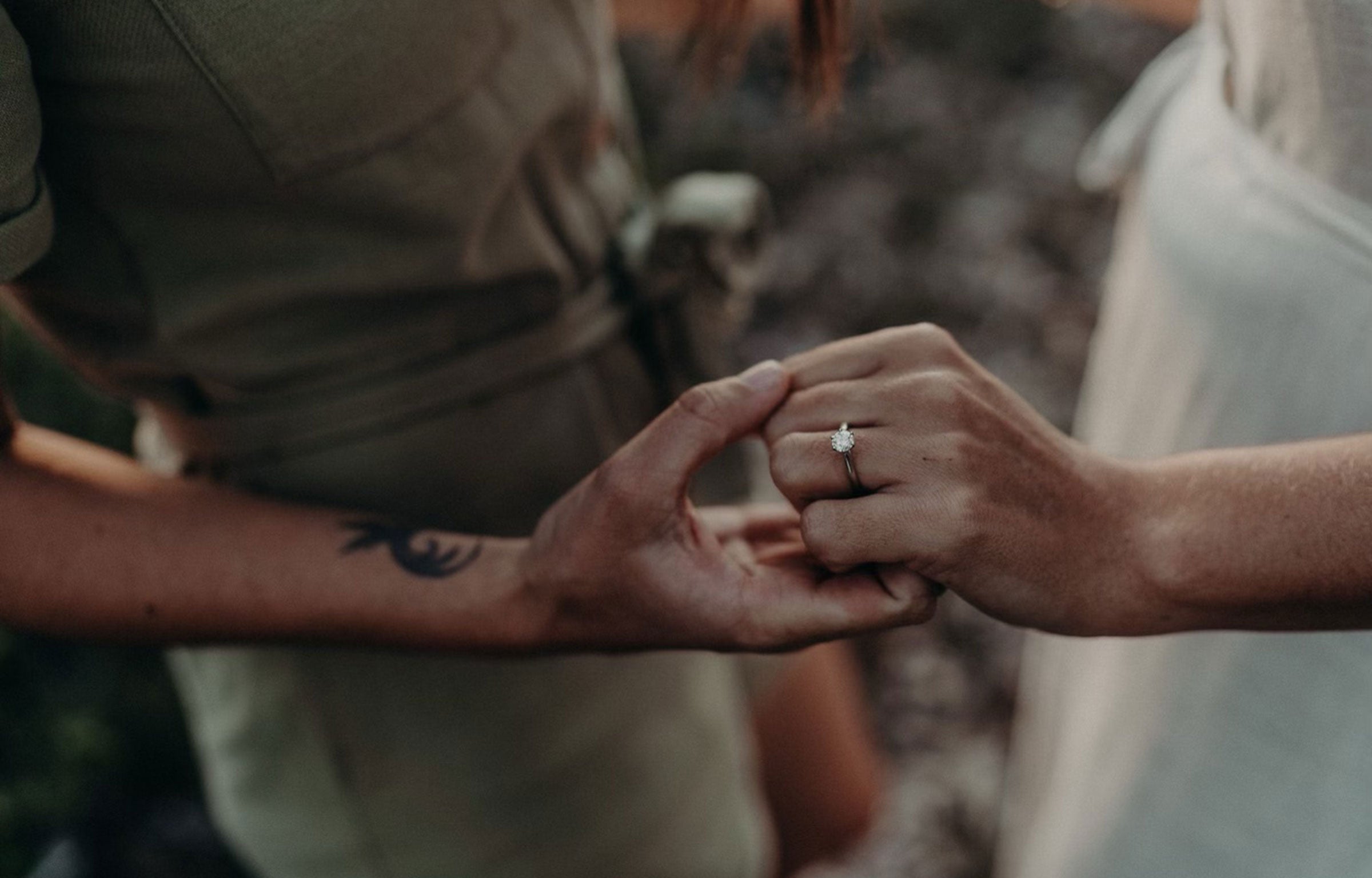
Five classic ring designs (and how you can do them differently)
Solitaire. Halo. Trilogy. Cluster. Signet. These classic rings stand the test of time. And for good reason. They’re timeless, elegant and undeniably beautiful. But let’s face it - everyone and their third aunt has one. Fortunately, with a few thoughtful touches, even the most traditional design can be transformed into a one-of-a-kind statement.
Here, we explore five iconic ring styles and how to make them uniquely yours.
Note: Some gemstones are more suited to long-term wear than others. If you're looking for an engagement ring, also check out these surprising engagement ring gemstones to say "I do" to.
Let’s dive in!
The 'Solitaire' ring
The solitaire has long been the epitome of elegance, highlighting the beauty of a single significant gemstone. Its history dates back to the Roman Empire, when gold bands were occasionally set with an uncut diamond. However it wasn't until the mid-20th century that the solitaire ring rose to prominence, driven by De Beers’ A Diamond is Forever marketing campaign. Here's how you can personalise yours.

- Choose an alternative gemstone: A unique gemstone is a simple way to turn a single-stone ring into a storytelling design. Instead of a white diamond, add colour with a parti sapphire, watermelon tourmaline or birthstone. Choose colours that evoke a feeling or memory, like aquamarine for tranquillity or garnet for adventure.
- Experiment with stone shapes: Add individuality with shapes like pears, asschers and hexagons. For those looking to break away from convention, freeform gems are a bold and creative choice. These unique cuts are typically guided by the shape and characteristics of the raw gem, allowing its natural beauty to shine through in unexpected ways.
- Add hidden details: A ring is more than just the gemstone. Hidden details can turn a traditional design into a one-of-a-kind keepsake. Add an accent stone under the solitaire, a symbol on the side of the setting or an engraving inside the band.
- Opt for different settings: The classic claw setting is iconic, but consider exploring different styles like bezel, tension and east-west settings.


The 'Halo' ring
The halo engagement ring is a dazzling design that frames the centre stone with a border of smaller gems. Originating in Georgian times, halo settings have taken on different forms throughout history, evolving with the aesthetics of each era. Here's how to make yours unique.

- Play with gemstone combinations: Conventional halos tend to feature white diamonds, but you can add a fun twist with other coloured gems. Frame a striking centre stone, such as a peachy morganite, with soft champagne diamonds. Or if you're feeling especially adventurous, add an ombré effect, where the surrounding gems gradually shift in colour to create a gradient.
- Change up the shape: Just because your centre stone is a certain shape, it doesn't mean your halo has to be. Frame a round stone with a geometric halo, like a hexagon or square. Alternatively, go for a floral halo with delicate petal-shaped gems for a romantic, vintage vibe.
- Opt for double or hidden halos: Take the brilliance up a notch with a double halo, featuring two layers of stones around the centre gem. For a subtler approach, consider a hidden halo - a circle of gems tucked just beneath the centre stone, visible only from the side.

The 'Trilogy' ring
The trilogy ring is rich in symbolism, with three stones representing your past, present and future. Traditionally, three-stone engagement rings feature a round or oval stone flanked by two matching diamonds. However, its versatility makes it the perfect canvas for creative reinterpretation.

- Experiment with asymmetry: Break away from tradition by mixing different stone shapes, such as a pear on one side and an oval on the other. Or remove the "centre" altogether and opt for a freeform arrangement of three stones. This unconventional configuration breaks the rules of symmetry while retaining the symbolic significance of the trilogy.
- Mix your metals: Consider a two-tone design, like a yellow gold band with a white gold setting, or rose gold with platinum for a softer, more romantic feel.
- Reimagine traditional placements: Traditional trilogy rings position the stones horizontally across the finger, but that doesn't mean you can't explore alternative arrangements. Try aligning the stones vertically or creating a flowing, more organic, configuration.

The 'Cluster' ring
The cluster is a playful arrangement of multiple gemstones. Organic or asymmetric clusters are particularly on-trend, often showcasing a mix of colourful gems in artistic arrangements. Whether you’re drawn to elegant symmetry or organic, nature-inspired designs, the cluster setting offers endless opportunities to create a storytelling ring.

- Mix gemstone shapes and sizes: Cluster rings thrive on variety. Start by selecting one or two larger gemstones as the focal point. These feature stones will draw the eye and set the tone for the entire design. Fill the gaps with smaller accent gems like pear shaped diamonds and marquis sapphires to add sparkle and a sense of movement.
- Create a rainbow: Go bright and bold with contrasting - even clashing - colours. Or stick to a single colour family like ocean blue sapphires, icy aquamarines and teal tourmalines. This is your opportunity to have a bit of fun and showcase your personality.
- Add meaningful details: Transform your ring into a personal keepsake by incorporating stones with symbolic value. Use birthstones to represent loved ones or choose gems associated with special memories or milestones, like this asymmetric cluster ring that became Lauren's symbol of strength.

The 'Signet' ring
The signet ring, steeped in history, was originally designed as a seal for letters and documents. Its large flat surface, typically engraved with a family crest or monogram, symbolised identity, heritage and status. Here's how to modernise this vintage design.

- Experiment with unique shapes: Traditional signet rings often feature round, oval or square faces. But modern interpretations embrace more unconventional shapes like hexagons, teardrops and minimal, elongated forms.
- Incorporate gemstones: Elevate the classic signet by letting the gemstones do the talking. Use heirloom gems to write your own story or add a sense of movement with small stones scattered across the band.
- Play with negative space: Modern signet rings might feature open or cut-out designs, using negative space to create a more contemporary aesthetic. This approach works beautifully for abstract symbols or minimalist patterns.


Bonus: The 'Asymmetric' ring
This one's a bonus because it's far from traditional. The asymmetric ring is a bold and unconventional choice, ideal for those seeking to step away from the norm. We'll keep this one short because asymmetry works beautifully with any of the styles discussed previously. Think a pear-shaped solitaire diamond lying on its side or a mix of gemstones in a creative asymmetric cluster ring. The possibilities are endless.

Ready to bring your dream ring to life?
Classic designs have earned their place as timeless staples, but that doesn’t mean they have to stay conventional. With thoughtful personalisation, it's possible to transform these iconic styles into meaningful, one-of-a-kind pieces. Check out the Design Gallery for more unique engagement ring inspo.
Book a jewellery consult to start the conversation. Because ultimately, the perfect ring is one that resonates with you. Let's chat about designing something that tells your story - bold, beautiful and completely yours.





